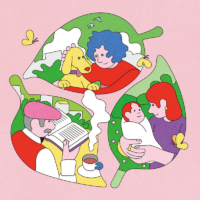Water is not what it once was, a synonym for simplicity and transparency. We used to bathe in it unthinkingly, admire it in our scenic views, drink it straight from the well or tap, and generally take it for granted. It soothed us by its very plainness: "Meditation and water are wedded forever," said Herman Melville. Now, though, like much else in our lives, water has grown complicated.
As properly skeptical 21st-century human beings, we know (having been told by experts) that pollutants and bacteria lurk in each clear-looking drop. The water that fills the bathtub may have run through old, dirty pipes. That pretty waterfall could be just a shower of chemical runoff from a golf course. Water no longer "droppeth as the gentle rain from heaven" that Shakespeare knew; it droppeth as acid rain, contaminating ponds and rivers and damaging vegetation. Above all -- or so the thinking goes in the brave new millennium -- we worry about drinking water from a well or a tap.
Once, people got their water fix by doing just that -- and they did it when they were thirsty. It wasn't rocket science. How things have changed. Now, many of us either attach fancy filters to our taps, pay for expensive home water-dispensers or spend a small fortune on bottled water, of which there are literally hundreds of different brands, types (spring, mineral, purified, still, aerated) and flavors available. An old Spanish proverb said: "Water for oxen; wine for kings." Not anymore. A U.S. men's health magazine reports this month on a panel of connoisseurs that recently sampled and rated nine leading brands of bottled water on a scale of one to 20. Water, it seems, has become the new wine, in Japan as in Europe and the United States. How to choose?

















With your current subscription plan you can comment on stories. However, before writing your first comment, please create a display name in the Profile section of your subscriber account page.